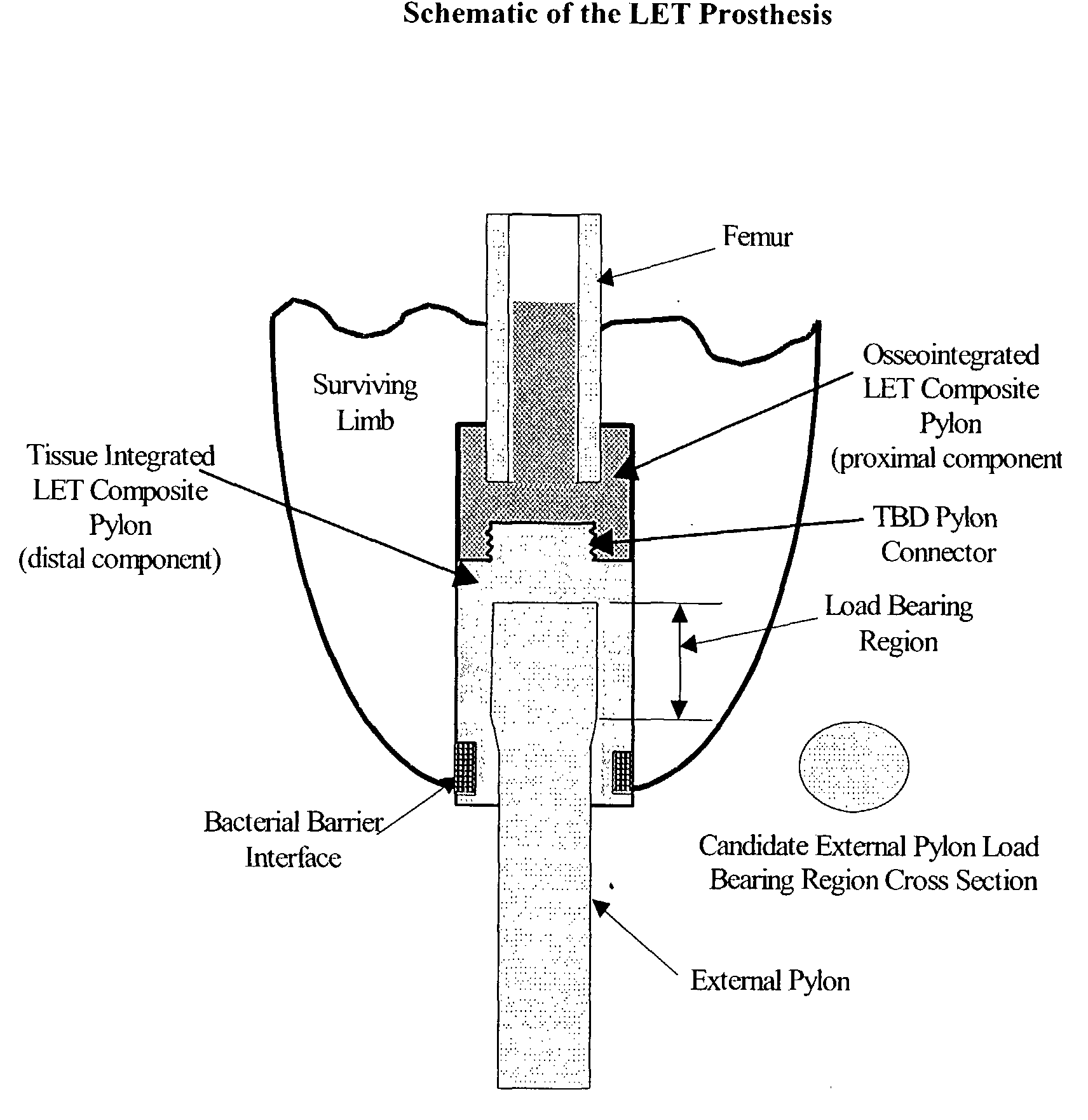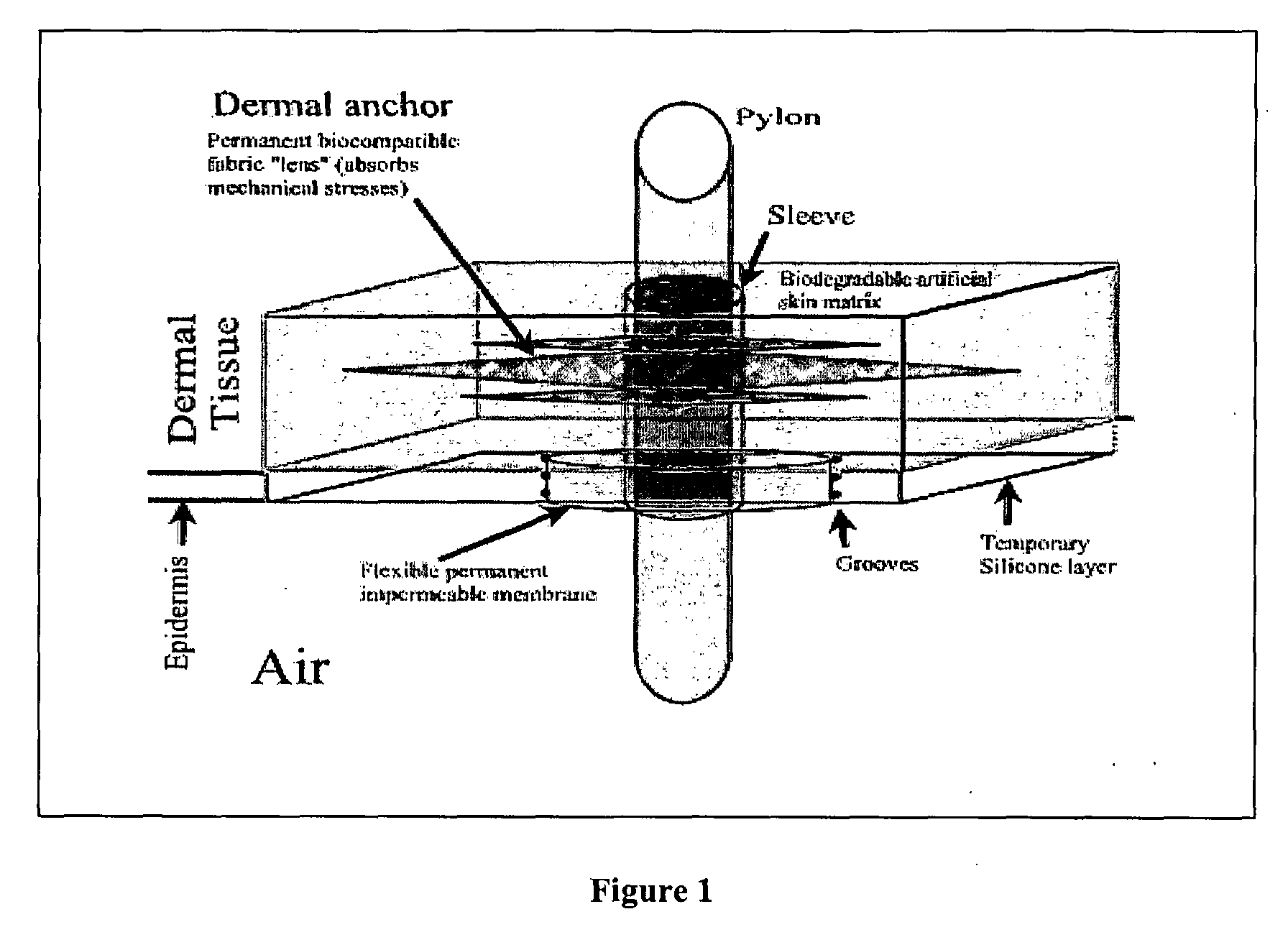Wound Closure System and Methods
a wound closure and wound technology, applied in the field of wound closure systems and methods, can solve the problems of many unresolved problems in the current system, no true biologic integration of the skin to the prosthesis, and obvious difficulty in designing, so as to reduce the risk
- Summary
- Abstract
- Description
- Claims
- Application Information
AI Technical Summary
Benefits of technology
Problems solved by technology
Method used
Image
Examples
example 1
[0079]The following table summarizes the experimental plan
ExperimentalSequencePrimary objectivesOther ObjectivesModelsPhase IFeasibility andSecondary objective ofWell characterized (for dermis)biomaterials selectionpreliminary observationanimal model that does not needfor dermal component.of epidermal junction as afor further development, but isguide to our Phase IIlimited to acute phase of woundprogram.healing.Phase II(1) FurtherAt the conclusion ofSwine model and furtheroptimization ofPhase II, we expect todevelopment of this model, whichmaterials and design ofhave experimental datawill enable the observation ofdermal component andon prototypes of aacute and chronic responses over(2) Materials selection,complete transcutaneousseveral months as well as thedesign andsystem to support aevaluation of prototypesoptimization of theproduct developmentcontaining both dermal andepidermal component.program.epidermal components and that arecompletely transcutaneous.
Specific Aims
[0080]The ove...
example 2
Prosthetic Need
[0170]At present there are many treatment options for loss of a limbs or parts of limbs, including revision amputation, replantation, open treatment, prostheses of various forms (for fingers, hands / feet, arms / legs: myoelectric, shoulder-powered, cineplasty), or most recently, transplantation41. None of these succeed in restoring the lost limb or body part with normally functional tissue derived from the person sustaining the injury. Prosthetic replacement is still the most common option for most limb loss.
[0171]For any prosthesis to function, it must interface with the residual limb to adequately transfer the loads of physical support, motion and control. This is traditionally achieved through an intimately fit socket. The socket is shaped to contain the volume of the residual limb segment while distributing interface stresses in a manner tolerated by the tissues. Practically, this balance of loads in the dynamic situation of the prosthesis is extremely difficult to o...
PUM
| Property | Measurement | Unit |
|---|---|---|
| pore size | aaaaa | aaaaa |
| pore sizes | aaaaa | aaaaa |
| pore sizes | aaaaa | aaaaa |
Abstract
Description
Claims
Application Information
 Login to View More
Login to View More - R&D
- Intellectual Property
- Life Sciences
- Materials
- Tech Scout
- Unparalleled Data Quality
- Higher Quality Content
- 60% Fewer Hallucinations
Browse by: Latest US Patents, China's latest patents, Technical Efficacy Thesaurus, Application Domain, Technology Topic, Popular Technical Reports.
© 2025 PatSnap. All rights reserved.Legal|Privacy policy|Modern Slavery Act Transparency Statement|Sitemap|About US| Contact US: help@patsnap.com



